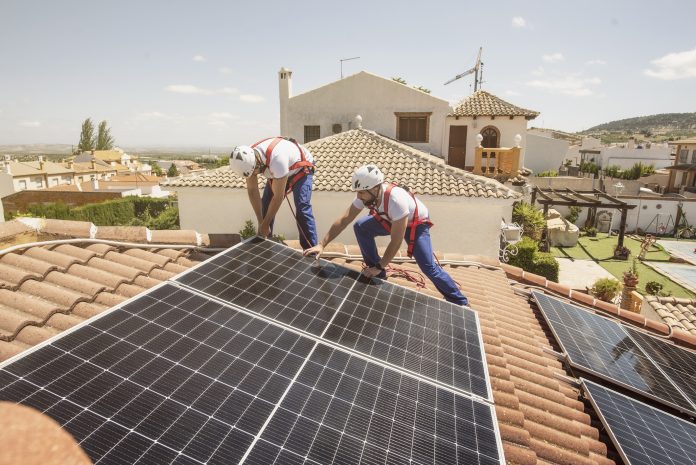The European Commission has started construction on a new net-positive emissions building in Seville that will set new standards in sustainable architecture
The new building of the Joint Research Centre (JRC) in southern Spain will be the first net-zero emissions building of its size developed by the EU.
Creating sustainability through innovation
Unlike carbon-neutral buildings that balance their emissions, this new JRC building goes a step further by actively removing more carbon dioxide from the atmosphere than it emits.
This will primarily be achieved through renewable energy, utilising a solar panel system that generates more power than the building requires for its operations.
The overall goal isn’t only to reduce environmental impact but also to become a symbol of innovation, aligning with the principles of the New European Bauhaus (NEB). An initiative was launched to merge design, sustainability, and social inclusion across European spaces.
Designing to match tradition
Architecturally, the project draws on Seville’s cultural heritage. Its dome-shaped structure and central square are reminiscent of traditional Andalusian layouts but reimagined with modern efficiency and climate-conscious materials.
A solar panel-covered roof will provide shade and energy, cooling the space below while using the sun’s power.
Inside and out, the building is designed with flexibility in mind. It will feature open, modular spaces that can adapt to evolving research needs. The materials selected, such as local limestone, wood, and ceramics, will reduce the building’s carbon footprint while also supporting the local economy and preserving the region’s architectural heritage.
The two-year construction plan
The construction is set to take two years. Once it’s complete, the net-positive emissions building will house around 400 researchers and staff who currently work at the JRC in Seville. Since its opening in 1994, the JRC has served as a key hub for scientific and technical expertise, supporting EU policies in fields like innovation, economic modelling, fiscal analysis, and digital transformation.
The new net-positive emissions building is expected to improve the Centre’s capabilities while showing what future-ready public infrastructure can look like.
Bringing the new European Bauhaus to life
The project is also a good example of the New European Bauhaus in action.
Launched by the European Commission, this project promotes the green transition through environmental goals, making space more liveable and inclusive for everyone.
It hopes to transform both urban and rural environments by offering tools, guidance, and funding for personalised, community-driven solutions.
By focusing on design that respects local traditions while embracing innovation, the NEB initiative will enhance people’s quality of life and strengthen Europe’s resilience, both socially and culturally, as well as economically.
The future of EU infrastructure
The Seville JRC project represents a prototype for the future of EU institutional infrastructure, one that prioritises climate action, celebrates cultural heritage and puts people at the Centre of development.











